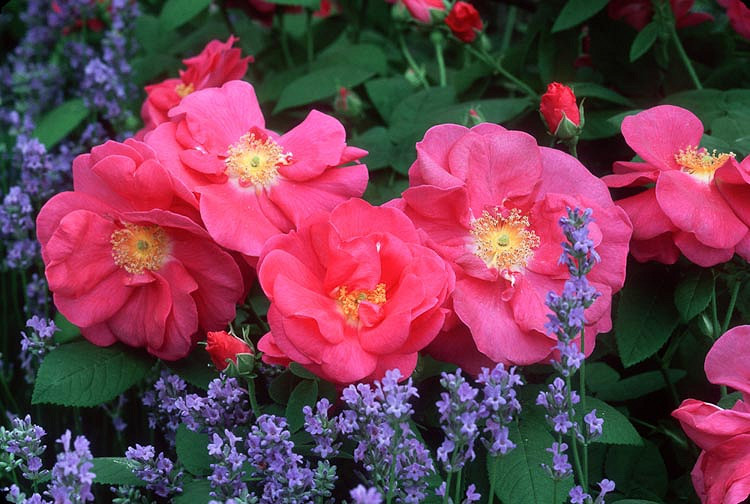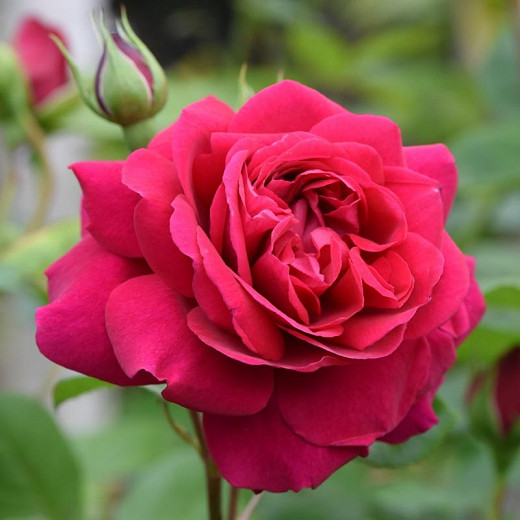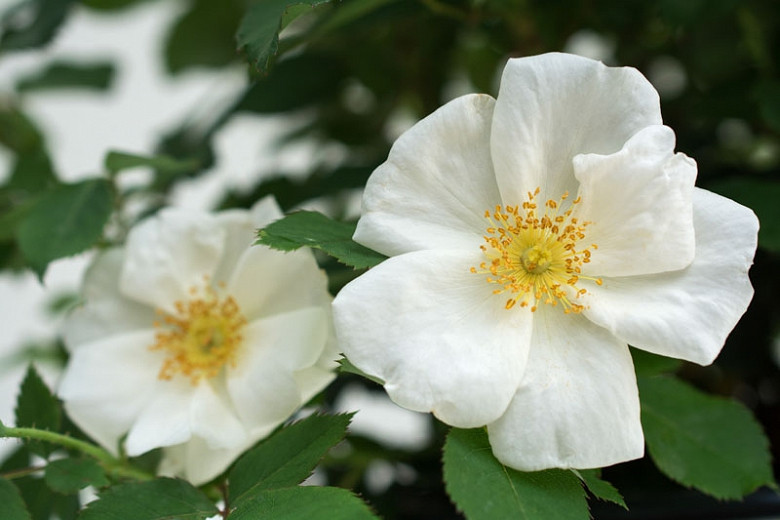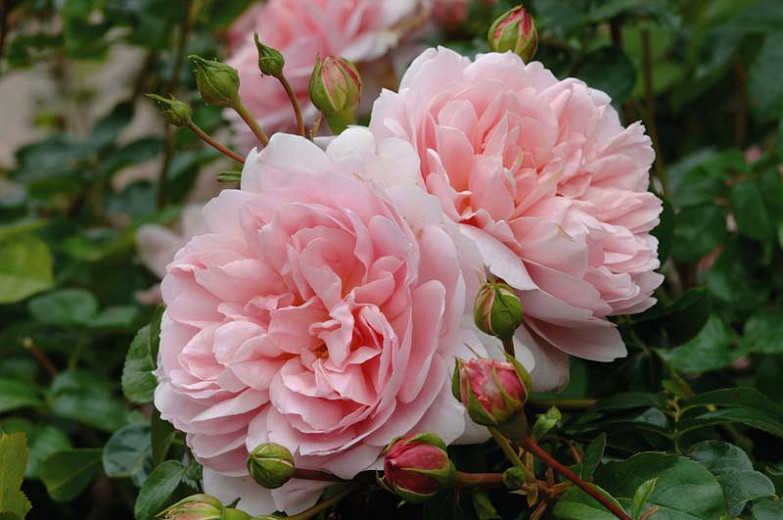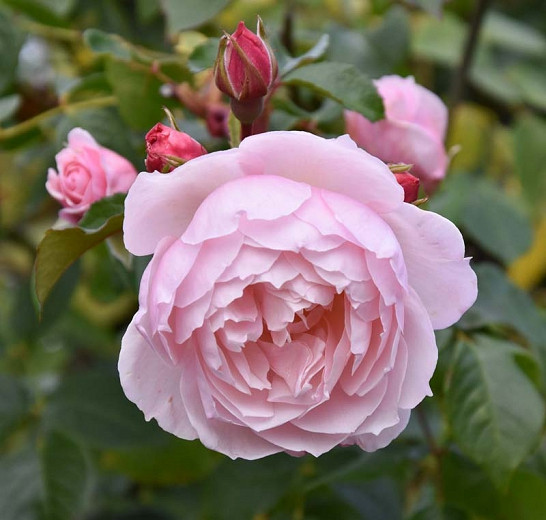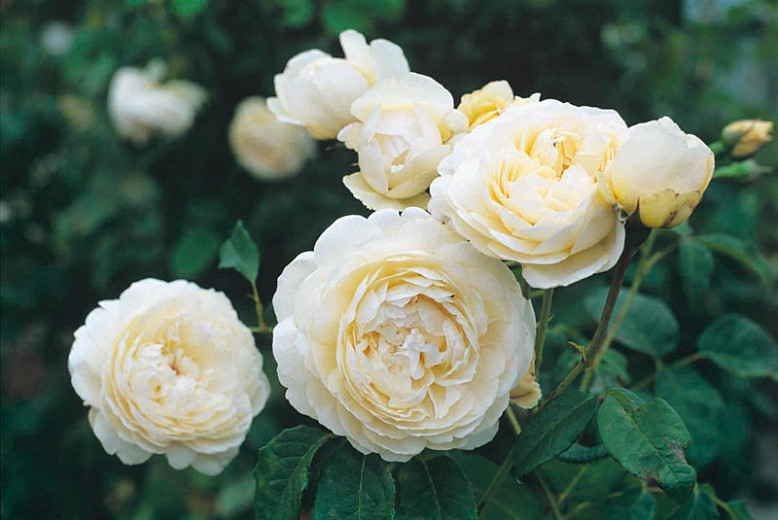Rosa gallica var. officinalis (Old Red Damask Rose)
Noted for its beauty and exceptional fragrance, Rosa gallica var. officinalis, commonly known as Old Red Damask or Red Rose of Lancaster, is a healthy and robust small shrub rose that can be relied on to provide interest and color. Parent to many floribunda and hybrid tea roses, it is covered with profuse, semi-double, rich, deep reddish-pink flowers, up to 3 in. (8 cm). The blooms start out cupped and open almost flat to reveal prominent yellow central stamens in late spring. Flowering is so profuse that the attractive blossoms nearly cover the gray-green foliage. As an extra bonus, these are followed in fall by crops of small bottle-shaped, orange-red rose hips, adding interest and color to the winter garden. Rich with a strong old rose fragrance, this terrific Rose tolerates some shade and poor soils and is an excellent choice where growing conditions are less than hospitable. This classic Rose has been cultivated for centuries, for use in medicines and perfume.
- Recipient of the prestigious Award of Garden Merit of the Royal Horticultural Society
- Blooming occurs in late spring to early summer and lasts about 3-4 weeks.
- Grows up to 3-5 ft. tall (90-150 cm) with a spread of 3-4 ft. (90-120 cm). Featuring a compact, bushy, rounded habit, this ravishing shrub is a superb addition to borders and creates lovely fragrant low hedges. Perfect for cottage gardens, coastal gardens or containers.
- Best grown in full sun, in fertile, humus-rich, moist, well-drained soils. Tolerant of poor soil and shade. For best flowering, apply a balanced fertilizer and mulch in late winter or early spring. Provide good air circulation and avoid overhead watering.
- Very disease resistant
- Attractive to pollinating insects, butterflies, and birds which feast on the colorful rose hips during the winter months.
- Requires little maintenance. Do not remove spent flowers if you want to enjoy a beautiful crop of orange-red hips in fall and winter. Pruning should be carried out once flowering is complete. Obviously, if pruning is carried out after flowering no hips will follow.
- Propagate by hardwood cuttings in fall or by budding in summer.
Requirements
| Hardiness | 3 – 9 |
|---|---|
| Heat Zones | 1 – 9 |
| Climate Zones | 2A, 2B, 3, 3A, 3B, 4, 5, 6, 7, 8, 9, 10, 11, 12, 13, 14, 15, 16, 17, 18, 19, 20, 21, 22, 23, 24 |
| Plant Type | Roses, Shrubs |
| Plant Family | Rosa – Shrub Roses, Rosa – Roses |
| Exposure | Full Sun, Partial Sun |
| Season of Interest | Spring (Late)Summer (Early,Mid) |
| Height | 3' – 5' (90cm – 150cm) |
| Spread | 3' – 4' (90cm – 120cm) |
| Spacing | 60″ (150cm) |
| Water Needs | Average |
| Maintenance | Low |
| Soil Type | Chalk, Clay, Loam, Sand |
| Soil pH | Acid, Alkaline, Neutral |
| Soil Drainage | Moist but Well-Drained, Well-Drained |
| Characteristics | Cut Flowers, Fragrant, Plant of Merit, Showy, Fruit & Berries |
| Attracts | Birds, Butterflies |
| Garden Uses | Beds and Borders, Hedges and Screens, Patio and Containers |
| Garden Styles | Coastal Garden, Informal and Cottage, Mediterranean Garden, Traditional Garden |
